Dramatic Dunnottar Castle
As I wrote in my overview of Aberdeenshire castles, my expectation was that the Dunnottar Castle ruins would be worth about a half-hour’s visit.
I’d seen photos, and its setting – on a cliff-edged finger of land extending out into the North Sea – made for some very dramatic photography.

In those photos, however, it looked like the castle itself would be pretty underwhelming: just a few walls and foundations, crumbling to the ground.
Walking from the parking lot, however, we (and everyone else visiting that day) kept stopping to take pictures. As we neared the top, it became increasingly clear that there was more to this castle than a simple ruin.
If you plan to travel by car, go to DiscoverCars for information and to compare prices.
Dunnottar Castle history
The castle has seen some pretty dramatic moments over the centuries.
The oldest part that is more or less standing today – the keep – dates to the late 14th century. It’s the first building you enter past the gatehouse as you climb up to the castle, and it’s the one that is most visible from the mainland.
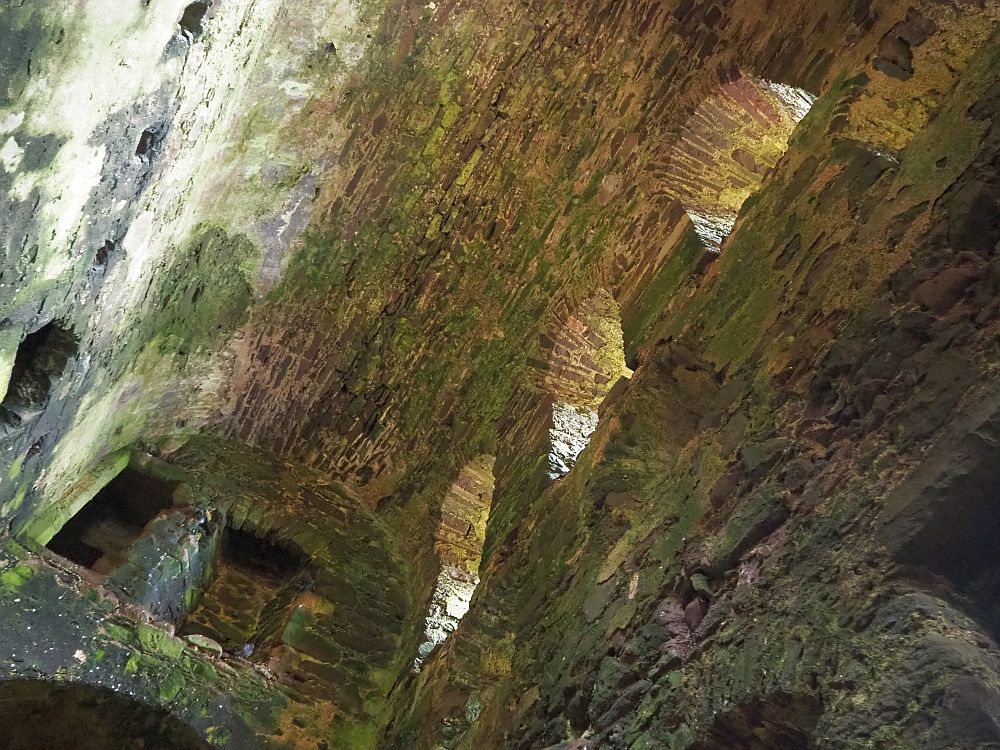
There was likely a chapel on the site as early as the 8th century and a Pictish fortress even earlier. The church that was consecrated in 1272 at Dunnottar was destroyed in 1296 by William Wallace, a Scottish hero, when he and just a few other men killed the entire English garrison that was stationed there. The church ruin that now stands on the site dates to the 16th century.
Another important moment in Dunnottar’s history occurred in the 17th century, when the Jacobites hid the Scottish crown jewels from Oliver Cromwell’s army at Dunnottar Castle, managing to resist a siege for eight months. By the time they surrendered, they’d managed to smuggle the jewels out and hide them elsewhere until the restoration of the monarchy a hundred years later.
A few decades later, in 1685, “covenanters” were imprisoned at Dunnottar Castle. They’d sworn to uphold the Covenant of Scotland, which meant that they refused to swear loyalty to the King of England as head of the church. They were first imprisoned in Edinburgh, but then 200 of them were walked to Dunnottar; only 167 of them arrived, the others dying on the way. Held in a filthy room under the castle without any sanitation, they had to pay for food and water. Some escaped, but most were recaptured or died trying to escape. The remaining prisoners were transported to New England, but only about half of them survived the trip.
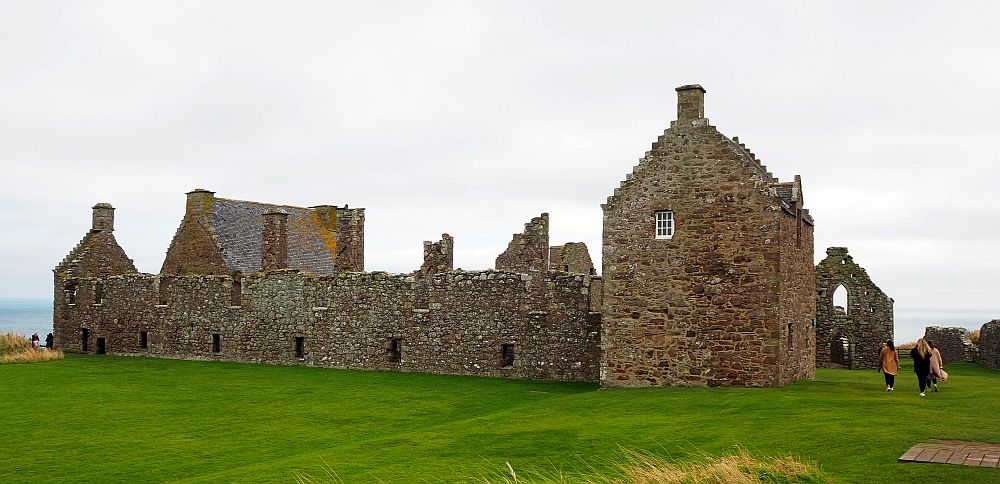
From the 14th century until the Jacobite rebellion in 1715, Dunnottar Castle belonged to the Keith family. The last Earl Marischal George Keith lost the castle and his estate in 1715 when he was found guilty of treason for supporting the Jacobites, and the government took over his estate.
The site was left to fall to ruins until the 20th century, when restorations began and it first opened to the public.
Here are some other posts you might also like to read:
Dunnottar Castle ruins
These ruins are much more extensive than we guessed from a distance. What’s left of the castle comprises several buildings ranging from the 14th to the 17th century, and visitors can explore at their leisure. When we took the time, we noticed details, like where upper floors must have been, judging from marks on the remaining walls.
The lowest levels of the castle are most intact. They still have their ceilings, the floors of the level above, which allowed us to get a better idea of what each area was used for. The kitchens, for example, still have recognizable fireplaces. We entered the Covenanters’ prison, where we could imagine the dank conditions they must have suffered when so many unwashed people filled the space.
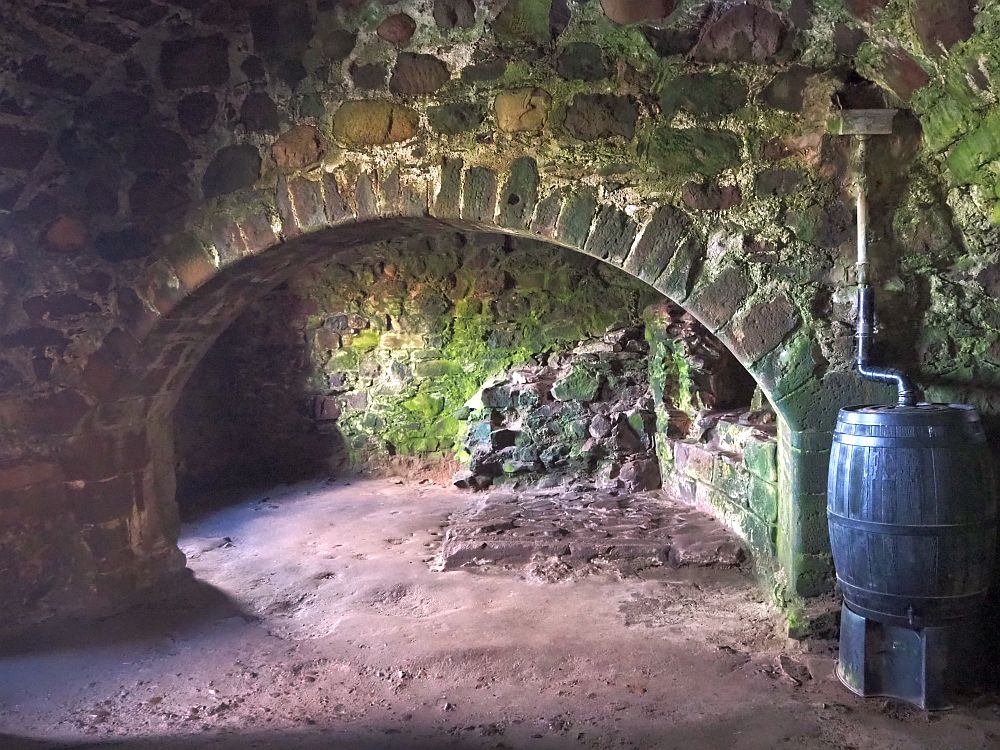
Breathtaking views
Looking out through the window of the Covenanters’ prison, we admired a wonderful view of the coastline across a bay. This wouldn’t have been much consolation to those trying to survive in that room, but for us it was a delight. Pretty much everywhere we paused at Dunnottar we could enjoy gorgeous views of land and sea.
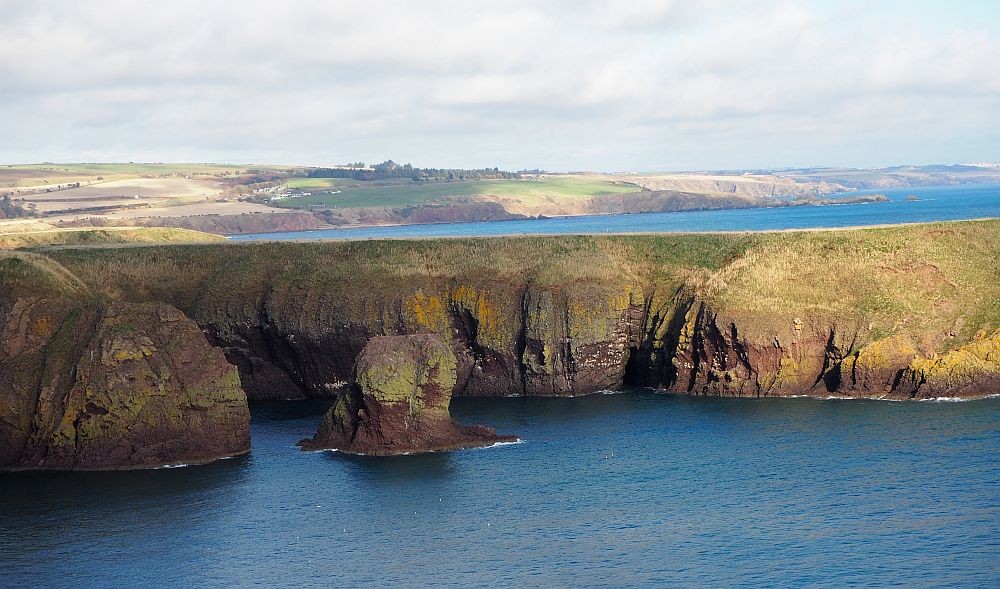
Descending through the castle, we followed a series of stone stairways to the the northern seaward side of the castle, eventually reaching the beach below. The tide was low, exposing tidepools, and exploring them reminded me strongly of my childhood on the beach in Connecticut. We spotted a variety of birds, but visited at the wrong time of year to see the colorful puffins.
Taking our time, we took in the dramatic views, both of the land across the small bay and the castle walls looming high above us. It was easy to see how difficult it would have been to attack this bastion from the sea.
Of course, climbing down meant climbing back up as well, but we took our time and stopped for picture-taking. The sky had cleared in the couple of hours we’d been there; the water sparkled. Now that we knew what that point of land held, I wondered about when the castle was in use. Was it more visible then? Or was it still hard to discern its size when viewed by potential attackers from the land?
Some advice for a trip to Dunnottar
I’d highly recommend a visit to Dunnottar for its dramatic beauty and history. Here’s some advice from my own visit:
- None of the ruin is accessible. If you have limited mobility or are in a wheelchair, you’ll only be able to admire it from the mainland. Nevertheless, it’s a wonderful view and worth a stop.
- Wear good, supportive walking shoes that can get wet, especially if you decide to go down to the beach and putter around the rocks and tidepools.
- Be careful on the stone steps. If it’s been raining, they might be slippery. Inside the buildings, the floors can be uneven.
- Take your time, especially if the weather is rainy. There’s plenty to see, and the weather can change by the minute.
- If it’s a hot day, bring a bottle of water. Unless you’re very fit, you’ll be huffing and puffing on all the stairs.
- Wear layers. As I mentioned, the weather can change quickly.
- There is a toilet at the castle, but as far as I saw, the only food service is on the mainland: a small kiosk at the parking lot.
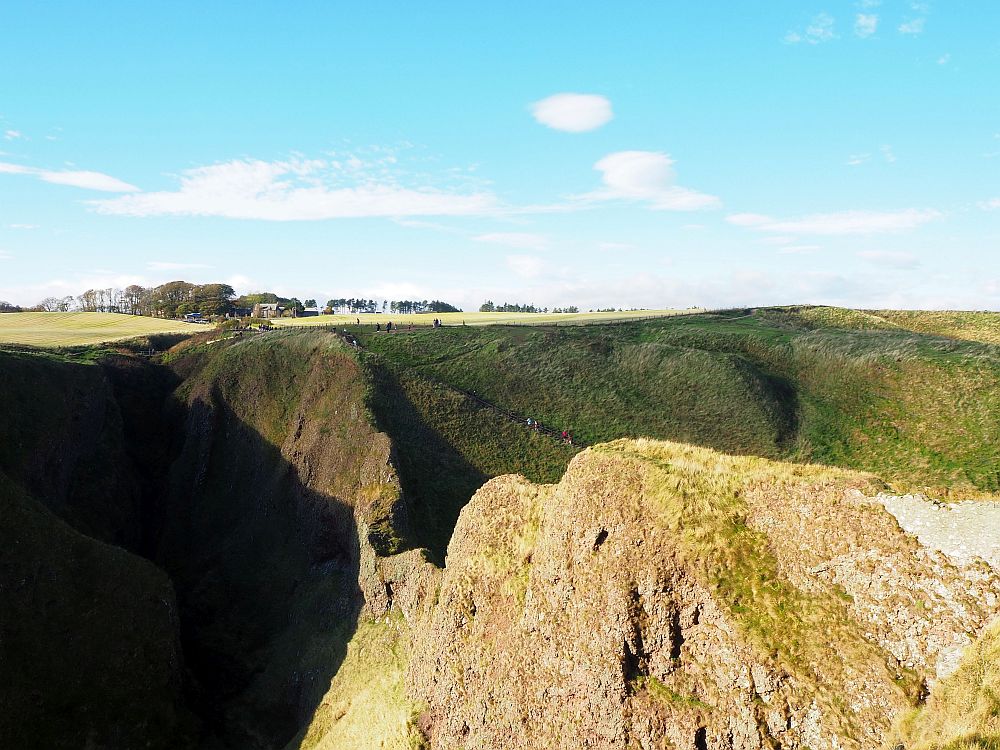
Planning your Dunnottar trip
Dunnottar Castle opening times and prices: In the summer, April to September, the castle is open from 9-17:30 daily. In the winter, October to March, it opens at 10:00 every day, but the closing times vary from 14:30 to 16:30. Check on their website. You should also check the website if the weather is particularly bad; they close the castle if it’s unsafe.
Admission: £7 (about $9 or €8).
How to get to Dunnottar Castle
Dunnottar Castle is about two miles (a bit more than 3 kilometers) south of the town of Stonehaven, which is about 16 miles (26 kilometers) south of Aberdeen.
The easiest way to get to the castle is from the parking lot off the A92, about 7 minutes’ drive from Stonehaven or a half hour’s drive from Aberdeen. The walk to the castle from there involves a relatively flat road along a field, followed by a long stairway down to sea level, then a stairway climb back up to the castle itself. However, the castle is quite popular and the parking lot may be full.
Another option is to park in Stonehaven. Dunnottar’s website gives good, complete directions and a map for the 8-kilometer walk along the coast with views of the castle.
The X7 and 107 buses from Aberdeen stop near the castle parking lot. You could also take a train to Stonehaven and walk the coastal trail from there.
If you’re staying in Aberdeen and don’t want to deal with arranging transportation, take this one day tour, which features a visit to Dunnottar, as well as some of the nearby sites of natural beauty.
I’d appreciate if you’d share this article on whatever social media you use!

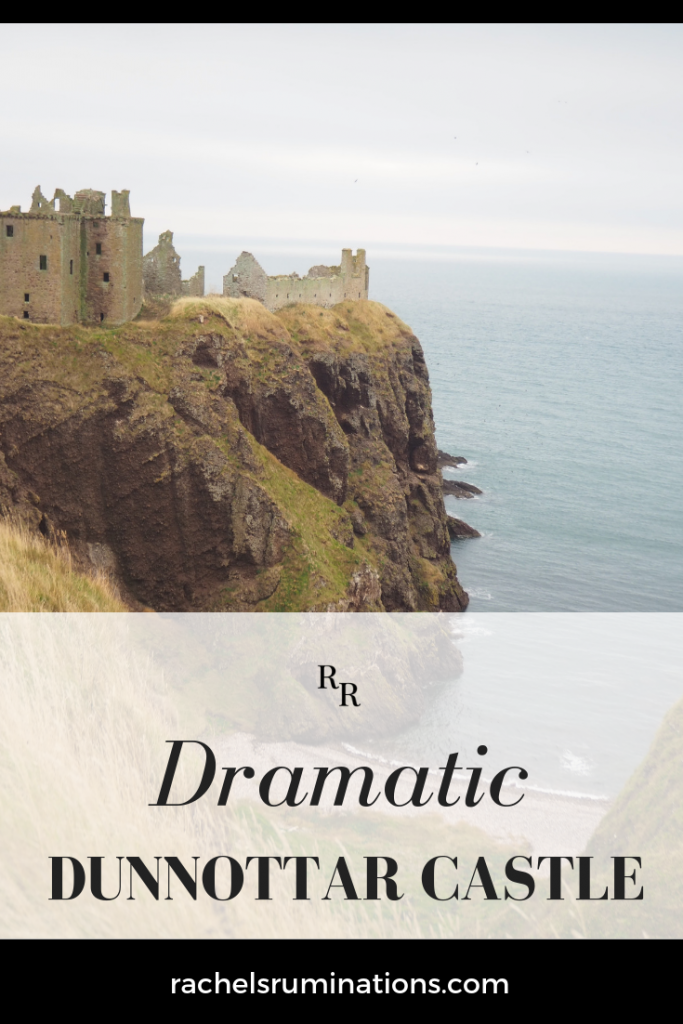



Good to know about the history of Dunnottar Castle. This should be a school trip destination for children.
School kids would love it, but it would be awfully stressful for the teachers! So many possibilities to fall!
Hi Rachel. Absolutely brilliant articles, really from a visitors point of view but with the respect the sites deserve. I’m also writing to ask – even though you request publication on social media – if it’s OK with you if I use this in a new sort of “village newsletter” Im doing in South Africa. Full credit and a clickable link (to your site) will provided when I repost. The format will probably be slightly revised wording (space allowing) and repost of some of your photos. Best regards. Michael (Mans Combrinck on FB)
I’ve emailed you.